
Take-Aways:
The S&P 500 traded to the key 3,900 level that we have been highlighting before fading over the past few days. Despite the sharp move lower yesterday, breadth metrics have not seen a sharp deterioration. While this is an encouraging development, we need to see continued progress in these metrics to have confidence that the countertrend rally can break and hold above 3,900.
NYSE Breadth
The NYSE Advance/Decline Line has crossed above the 50-day moving average and remains there despite a sharp selloff in yesterday’s trading. Continued improvement is needed from the A/D Line if the S&P 500 is going to be able to break above the 3,900 level that we have been highlighting. The index is wrestling with its 50-day moving average after a strong rally in October.
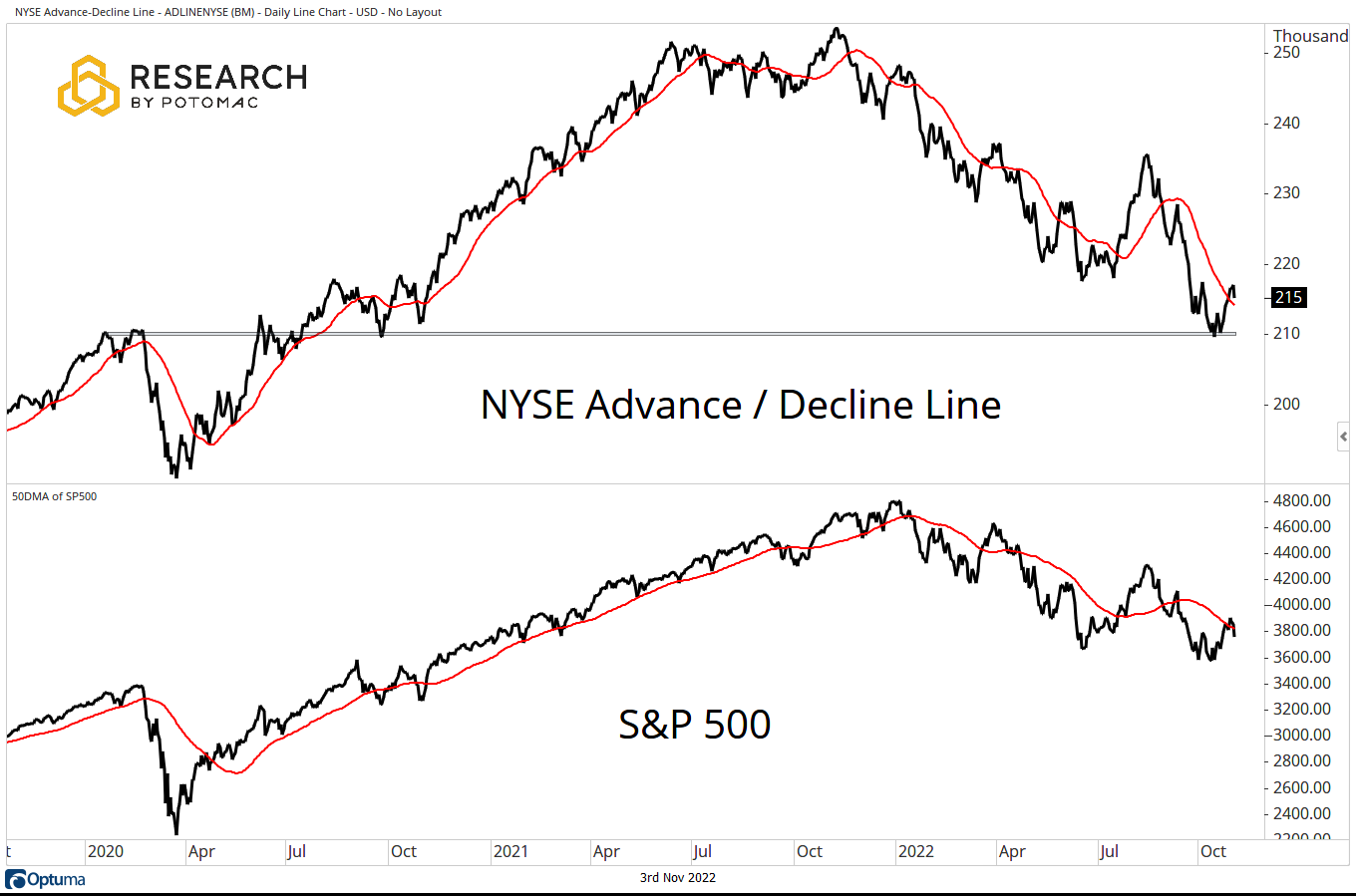
The five-day moving averages of issues on the NYSE making new 52-week and six-month lows have moved lower again this week. We want to see these metrics maintain a downtrend as the index moves through 3,900.
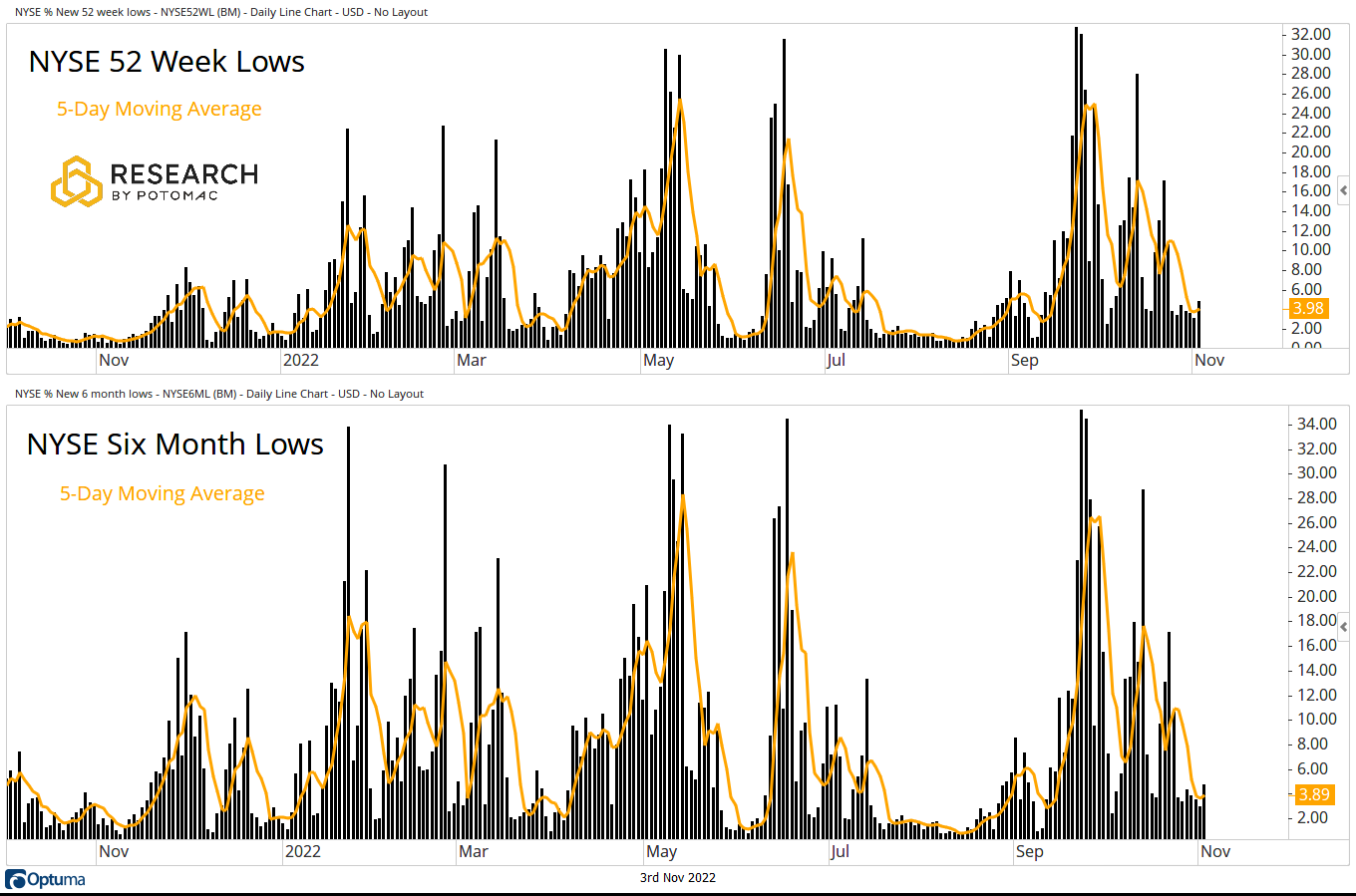
The five-day moving averages of stocks on the NYSE making new six-month and 52-week highs have moved higher again this week. Recent strength in these metrics has taken them above the August peaks, a sign of continued improvement.
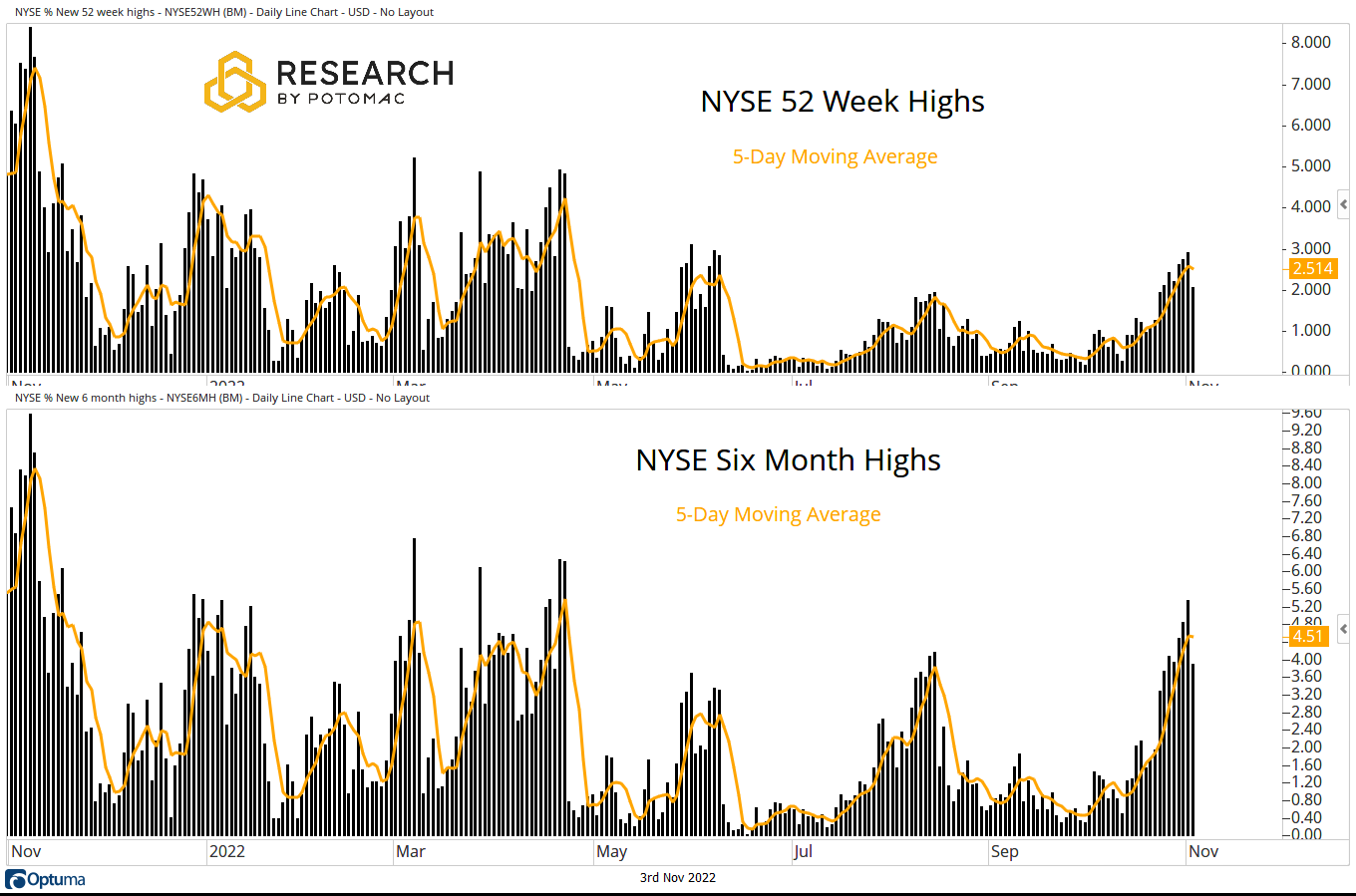
The percentage of NYSE issues trading above their respective 200-day moving averages moved to 23% this week from 21% last week and remains in a downtrend. The S&P 500 remains below its 200-day moving average. This metric will take time to reverse.
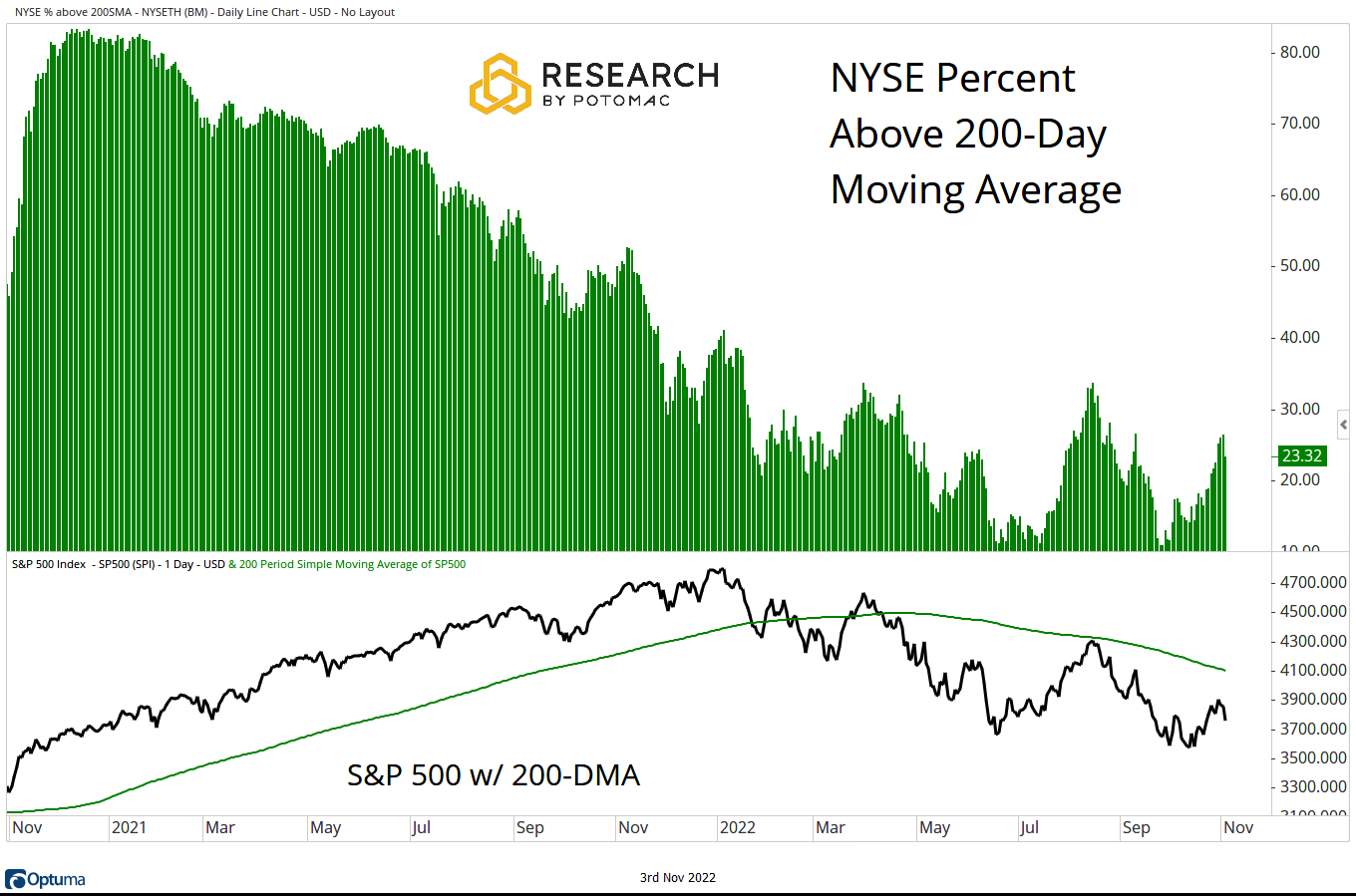
The percentage of NYSE issues trading above their respective 50-day moving averages moved to 38% from 35% last week. The S&P 500 is fighting with its 50-day moving average after fading from the 3,900 level that we have been highlighting.
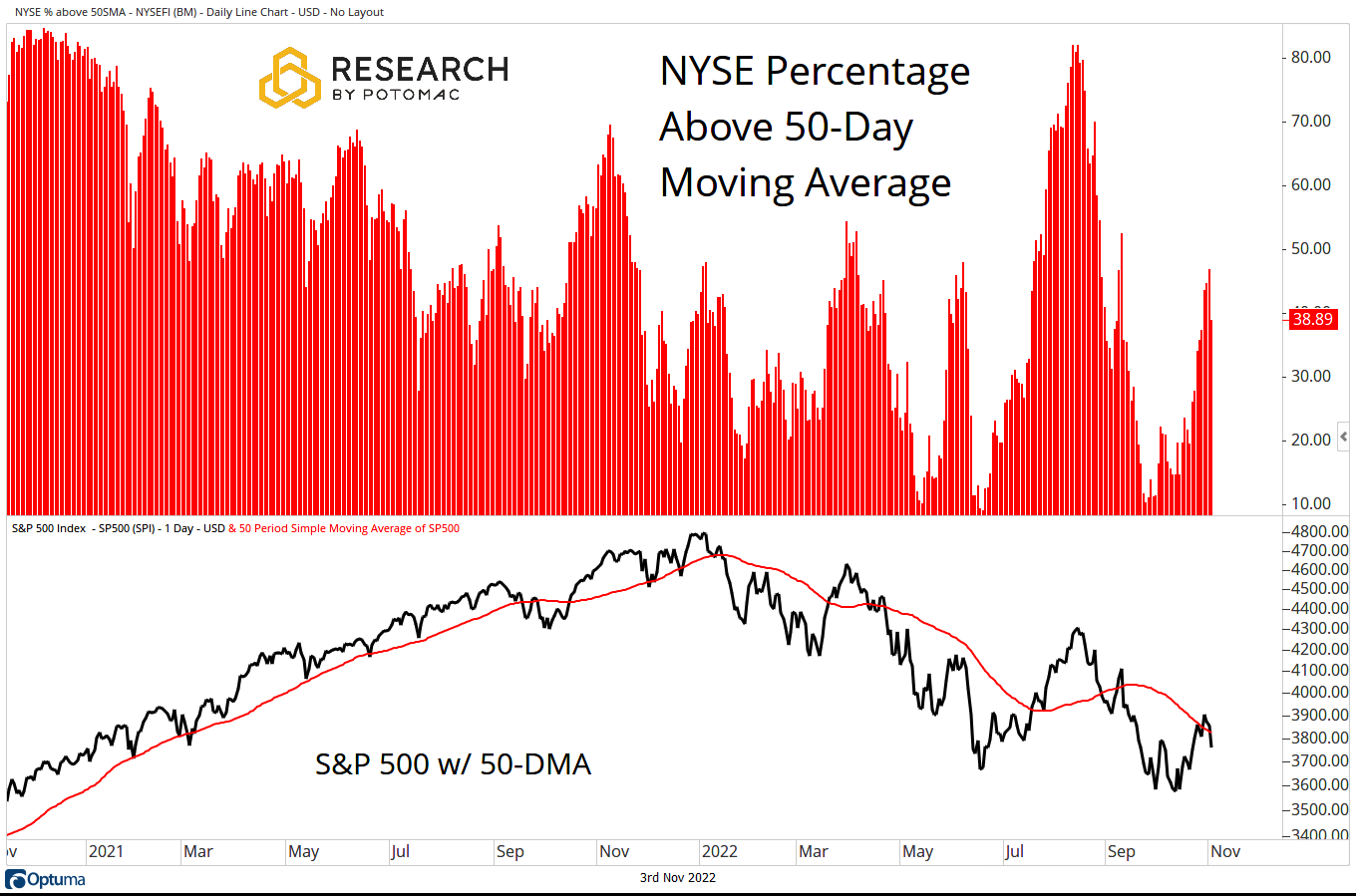
The percentage of issues on the NYSE trading above their respective 20-day moving averages stands at 60%, down from 64% last week. The index is above its 20-day moving average, which is beginning to turn higher.
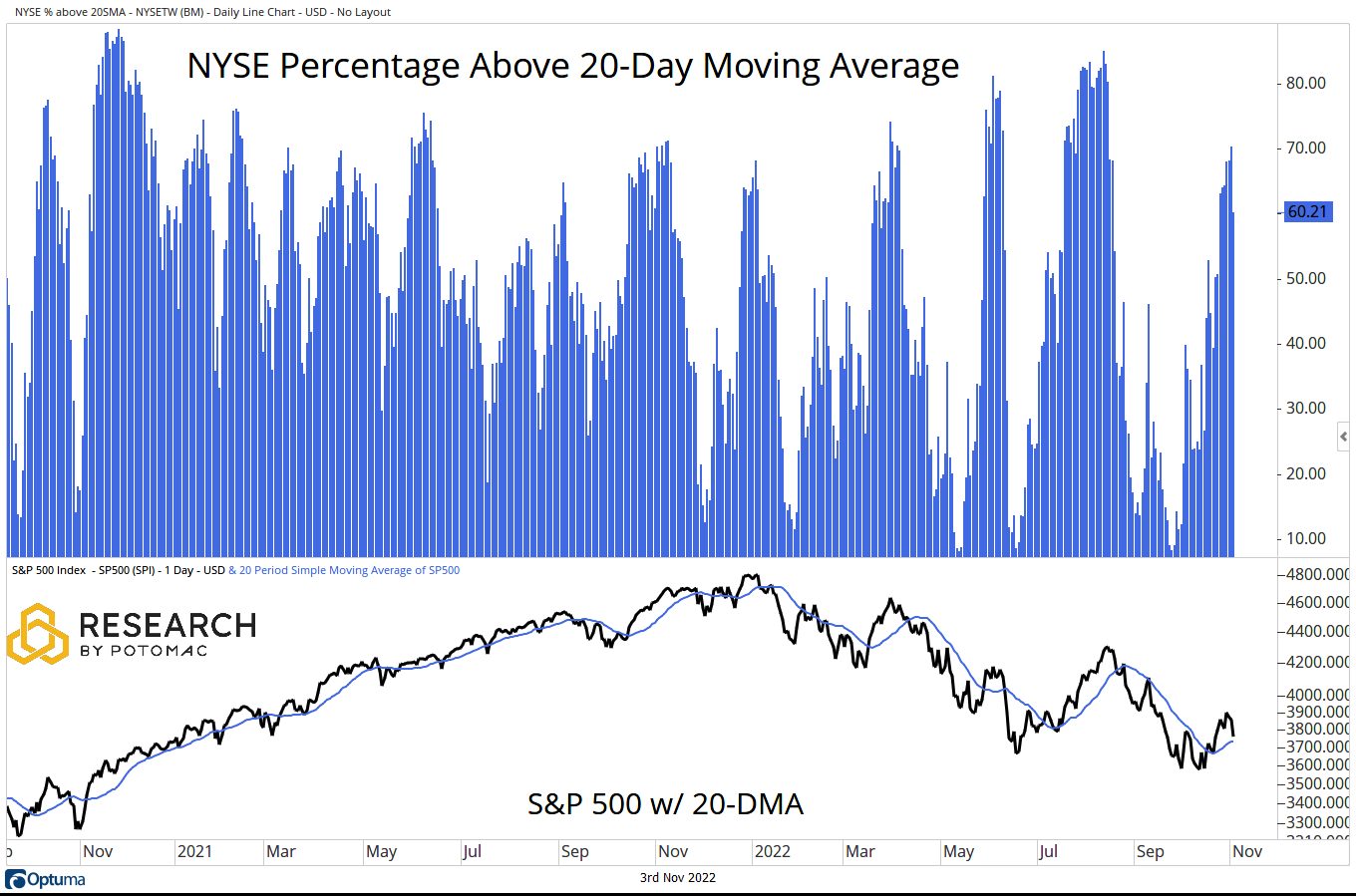
S&P 500 Breadth
Breadth metrics for the S&P 500 were mixed over the past week.
- Advance/Decline Line: Testing the 50-day moving average from below.
- Percent Above Their 200-Day Moving Average: 32% from 29% last week.
- Percent Above Their 50-Day Moving Average: 49% from 49% last week.
- Percent Above Their 20-Day Moving Average: 73% from 83% last week.
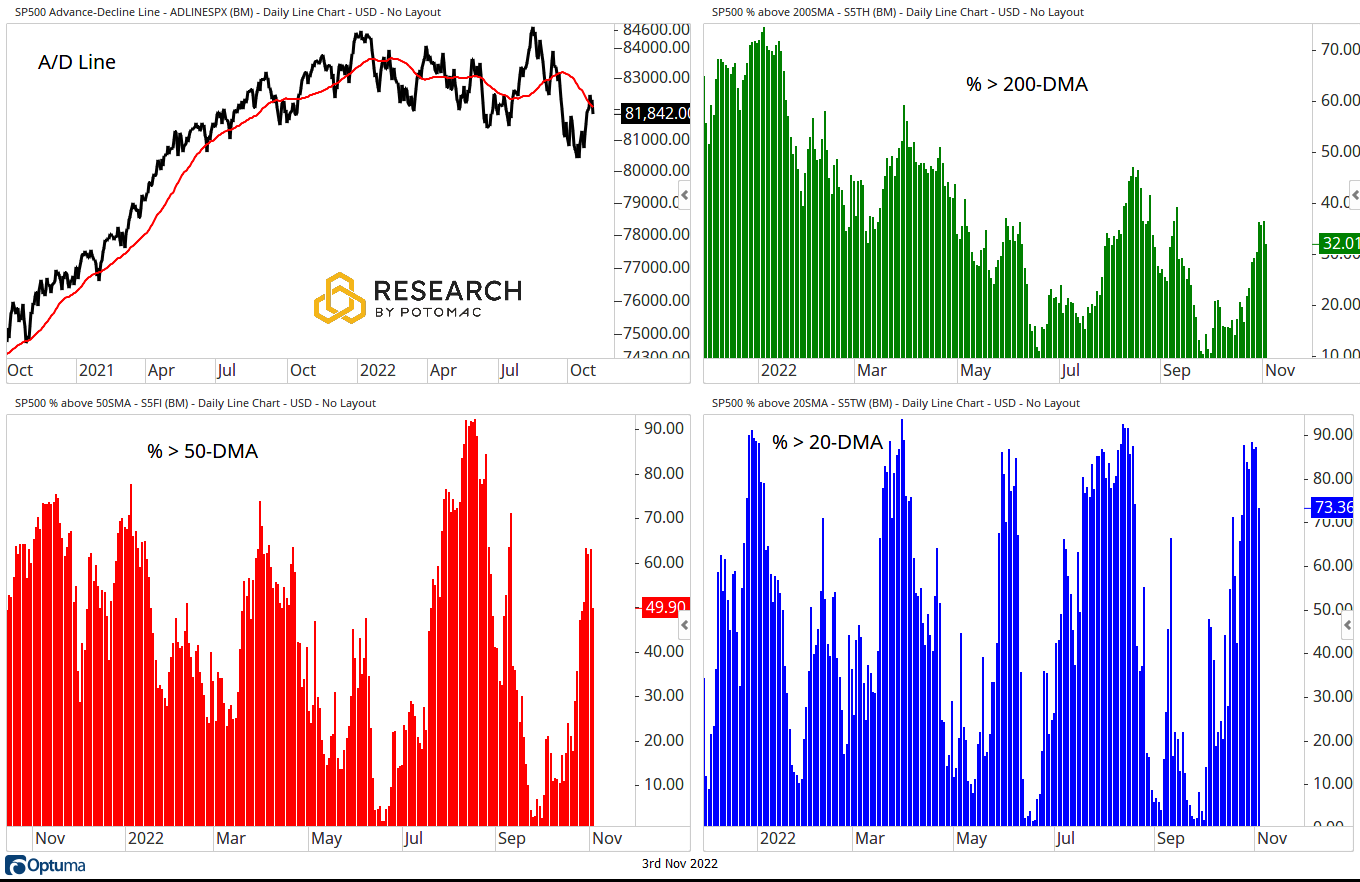
Small Cap Breadth
Breadth metrics for the S&P 600 Small Cap Index were mostly stronger this week.
- Advance/Decline Line: Above the 50-day moving average.
- Percent Above Their 200-Day Moving Average: 37% from 35% last week.
- Percent Above Their 50-Day Moving Average: 60% from 56% last week.
- Percent Above Their 20-Day Moving Average: 71% from 85% last week.
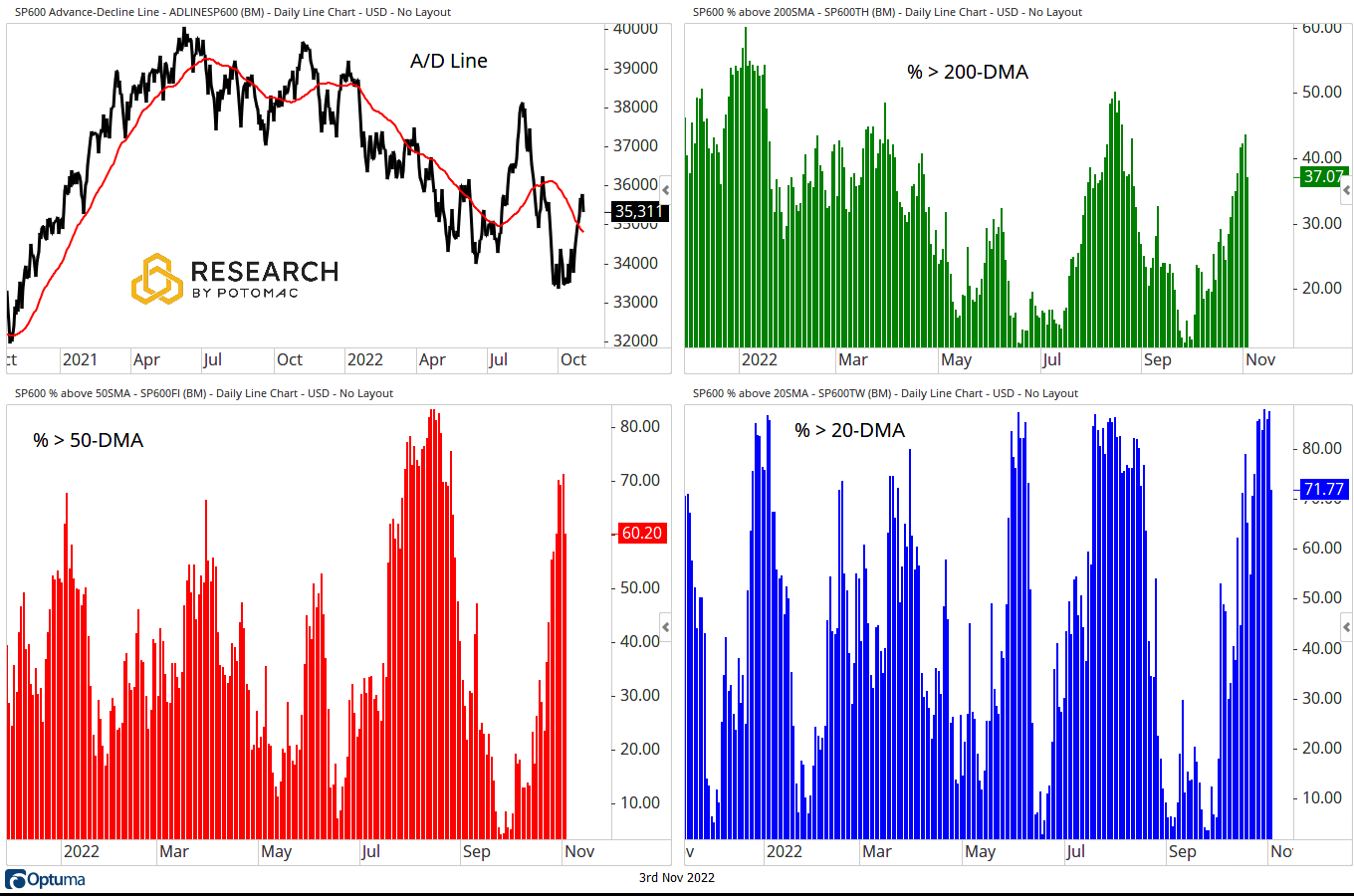
NASDAQ 100 Breadth
Breadth metrics for the NASDAQ 100 were mostly weaker over the past week.
- Advance/Decline Line: Below the 50-day moving average after a brief test.
- Percent Above Their 200-Day Moving Average: 24%, from 23% last week.
- Percent Above Their 50-Day Moving Average: 35% from 40% last week.
- Percent Above Their 20-Day Moving Average: 54% from 76% last week.
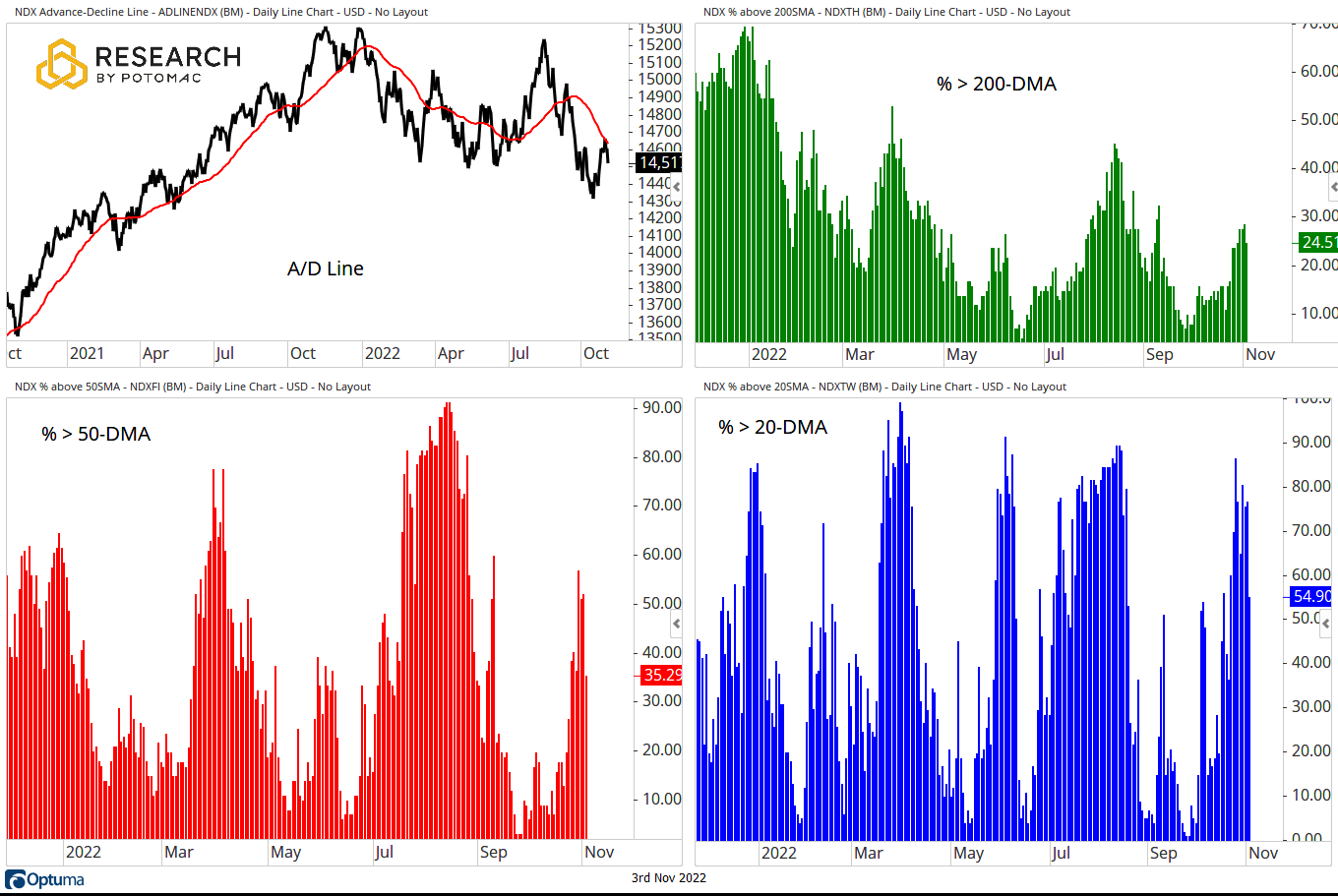
Potomac Fund Management ("Company") is an SEC-registered investment adviser. SEC registration does not constitute an endorsement of the advisory firm by the SEC nor does it indicate that the advisory firm has attained a particular level of skill or ability. This information is prepared for general information only and should not be considered as individual investment advice nor as a solicitation to buy or offer to sell any securities. This material does not constitute any representation as to the suitability or appropriateness of any investment advisory program or security. Please visit our FULL DISCLOSURE page. The company does not make any representations or warranties as to the accuracy, timeliness, suitability, completeness, or relevance of any information prepared by any unaffiliated third party, whether linked to the Company website or incorporated herein, and takes no responsibility for any of this information. The views of the Company are subject to change and the Company is under no obligation to notify you of any changes. Different types of investments involve varying degrees of risk, and there can be no assurance that the future performance of any specific investment or investment strategy will be profitable or equal to any historical performance level.
